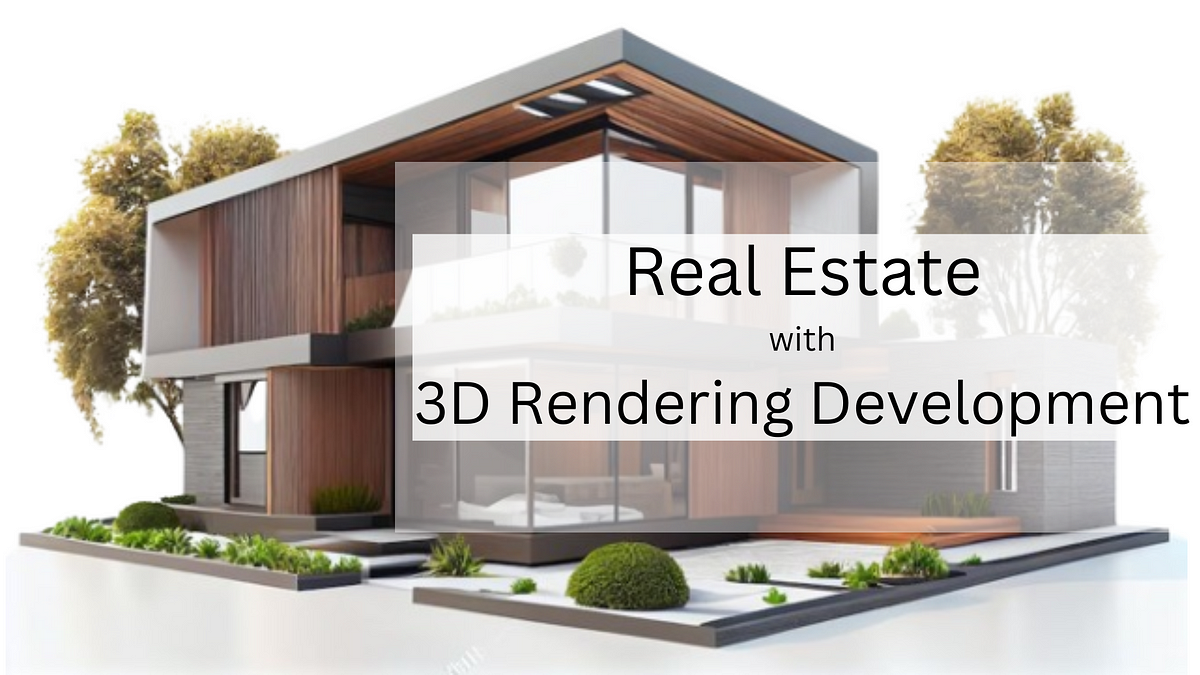Introduction
In recent years, the real estate industry has undergone a significant transformation with the adoption of advanced technologies, particularly 3D rendering. This digital revolution has revolutionized how properties are marketed, designed, and visualized, offering immersive experiences that enhance decision-making and customer satisfaction. This article explores the impact of 3D rendering in real estate, its benefits, applications across different sectors, challenges, and future trends.
Benefits of 3D Rendering in Real Estate
3D rendering brings numerous benefits to the real estate industry, revolutionizing traditional practices in several ways:
- Visual Realism: 3D rendering creates highly realistic visualizations of properties, allowing potential buyers or tenants to explore every detail before visiting in person. This realism helps in setting accurate expectations and reducing the need for multiple property visits.
- Design Flexibility: Architects and developers can experiment with different designs, materials, and layouts in a virtual environment. This flexibility enables them to visualize and refine concepts before construction, leading to more efficient planning and fewer design revisions.
- Enhanced Marketing: Real estate agents and developers can showcase properties with compelling visual presentations that stand out in competitive markets. High-quality renderings attract more attention online and in marketing materials, driving interest and potential sales.
- Cost and Time Savings: By reducing the need for physical models and multiple iterations of designs, 3D rendering saves time and costs in the development and marketing phases. It streamlines the approval process and accelerates project timelines.
- Personalization and Customization: Buyers can personalize aspects of their future homes through 3D renderings, visualizing different finishes, furnishings, and layouts. This customization enhances the buying experience and strengthens emotional connections with the property.
Applications of 3D Rendering Across Different Sectors
The versatility of 3D rendering extends beyond residential real estate to various sectors within the industry:
- Commercial Real Estate: 3D rendering is used to visualize office spaces, retail environments, and mixed-use developments. Detailed renderings help businesses make informed decisions about leasing or purchasing commercial properties.
- Hospitality and Tourism: Hotels, resorts, and vacation rentals utilize 3D rendering to showcase amenities, room layouts, and scenic views. Virtual tours created with 3D rendering enhance booking conversions by providing a realistic preview of the guest experience.
- Real Estate Development: Developers use 3D rendering to present proposed projects to investors, stakeholders, and regulatory authorities. Renderings communicate the vision and potential of a development, facilitating approvals and funding.
- Interior Design: Designers leverage 3D rendering to visualize interior spaces, furniture arrangements, and decor choices. Clients can see how different design elements come together in their homes or businesses, making informed decisions before implementation.
- Property Management: Property managers use 3D rendering for renovations, tenant improvements, and space planning. Accurate visualizations help in optimizing space utilization and enhancing tenant satisfaction.
Challenges in Adopting 3D Rendering
While 3D rendering offers numerous benefits, its adoption in real estate is not without challenges:
- Cost of Implementation: High-quality 3D rendering requires skilled professionals and specialized software, which can be costly for smaller firms or individual agents.
- Learning Curve: Mastering 3D rendering software requires time and training. Real estate professionals may need to invest in education or hire experienced renderers to produce high-quality visuals.
- Technical Limitations: Complex designs or large-scale projects may strain rendering capabilities, leading to longer processing times or compromises in visual quality.
- Client Expectations: Realistic renderings can set high expectations that may not always match the final product. Managing client expectations and ensuring transparency is crucial to avoid disappointment.
- Data Security: Protecting sensitive project data and intellectual property rights when sharing 3D renderings with clients, contractors, or third parties requires robust security measures.
Future Trends in 3D Rendering
The future of 3D rendering in real estate promises continued innovation and evolution:
- Virtual Reality (VR) Integration: VR technology allows users to experience properties in immersive virtual environments. VR headsets offer potential buyers virtual tours and interactive experiences, enhancing engagement and decision-making.
- Augmented Reality (AR) Applications: AR overlays 3D renderings onto real-world environments, providing real-time visualizations of properties through mobile devices. AR apps enable users to visualize furniture placement, renovations, or design changes in their physical spaces.
- AI and Machine Learning: AI-driven rendering software can automate the creation of 3D Model Generator and enhance realism by simulating lighting, textures, and environmental conditions. Machine learning algorithms improve rendering efficiency and quality over time.
- Interactive and Customizable Experiences: Advanced rendering techniques enable real-time adjustments to designs, layouts, and finishes during client presentations. Interactive platforms allow buyers to customize properties in real-time, fostering a more personalized buying experience.
- Sustainability Visualization: Renderings will increasingly highlight sustainable features and green building practices. Visual representations of energy-efficient designs and eco-friendly materials will appeal to environmentally conscious buyers and investors.
Conclusion
The digital revolution in real estate, fueled by 3D rendering technology, has transformed how properties are marketed, designed, and experienced. From enhancing visual realism and design flexibility to streamlining marketing efforts and accelerating project timelines, 3D rendering offers unparalleled advantages across various sectors within the industry. While challenges exist, ongoing advancements and future trends promise even more innovative applications, shaping the future of real estate in exciting ways.
